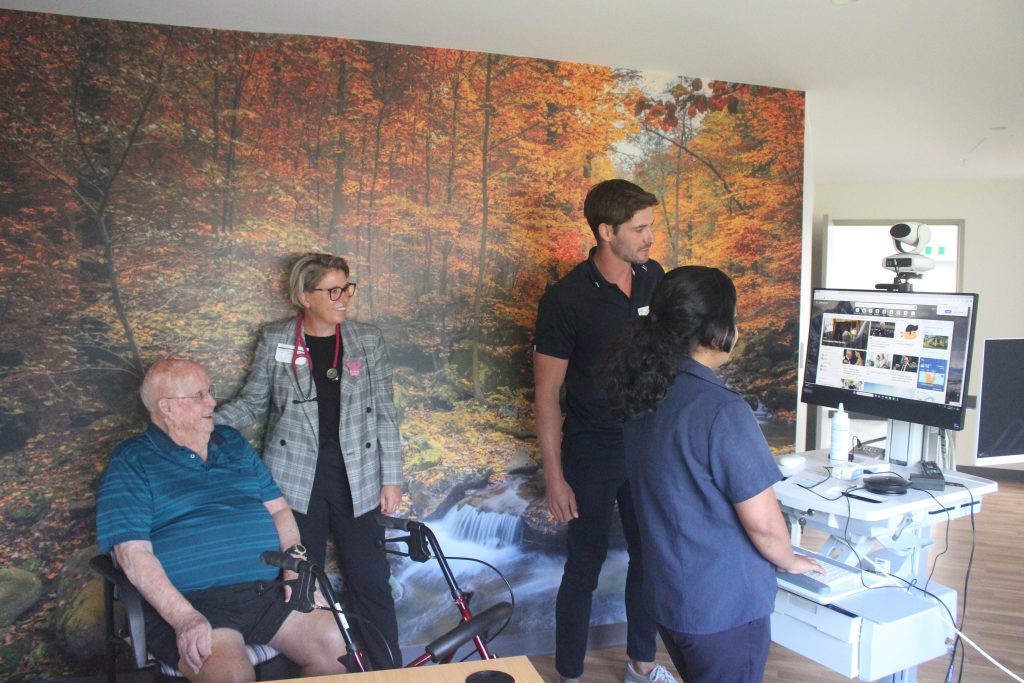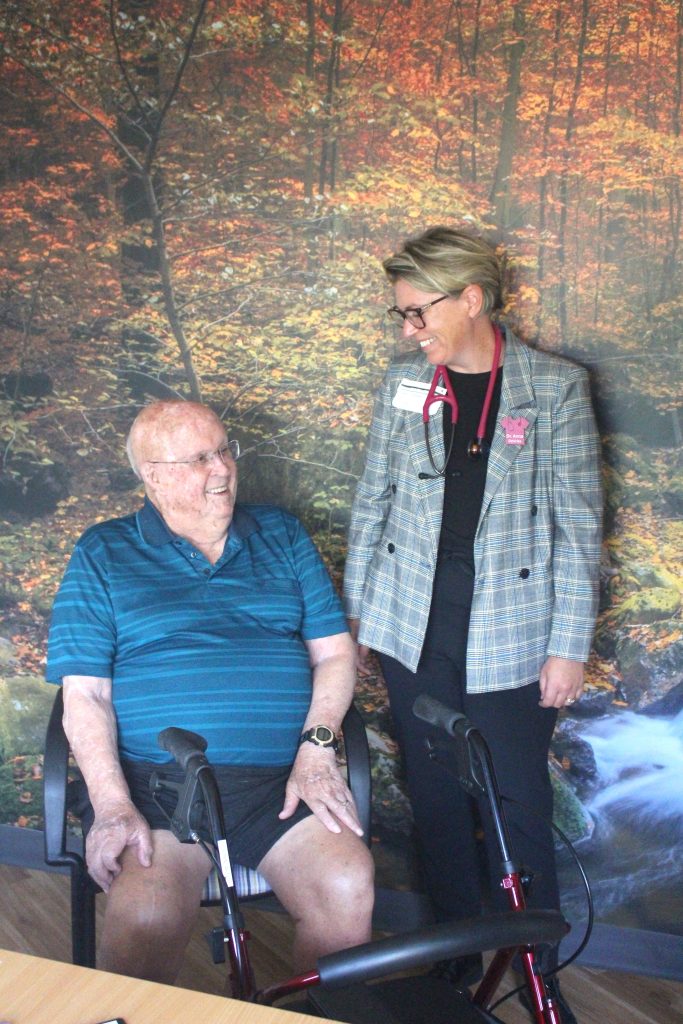Virtual services yield real benefits
Posted on August 8, 2024

How one aged care home is increasing access to health services through telehealth
An aged care home might not be the first place that comes to mind when thinking about cutting-edge technology in health care. But Snug Village in the state’s south is full of surprises.
Its nursing staff are warm, friendly, and committed to providing a high standard of care and innovation.
So much so that they tested their brand-new telehealth equipment on themselves to make sure they were completely comfortable using it before trying with a resident for the first time.
The machine was purchased under a small grant program aimed at increasing the uptake of telehealth services by aged care homes.
In 2023 and 2024, Primary Health Tasmania offered grants of up to $10,000 each which homes could use to improve internet connectivity, buy equipment or software, or undertake minor building improvements such as soundproofing a telehealth consultation room. A total of 49 aged care homes around the state received funding.
Primary Health Tasmania will be delivering a telehealth training program for residential aged care homes across Tasmania from mid 2024. The program will be introduced by a local training provider, will include online and face-to-face training and will then be available on-demand for all organisations.
The training has been designed to provide support for all aspects of telehealth for participants at both ends of the line, such the residents, their families, aged care staff and healthcare professionals providing care – including GPs, specialists, and allied health professionals. The modules have been deliberately kept small and highly relevant, taking only six minutes each to complete.
Snug Village’s medical staff say their new equipment is helping improve access to medical appointments and coordination of care for residents.
Teena Joy is a registered nurse who is leading the charge on using the machine.
“The first time we used it, we were suspecting urinary retention of a resident, but we didn’t want to send the resident to the hospital,” Teena explains.
“So doctor Anna (De Vries) and I used the ultrasound facility of the telehealth machine to check if the resident had urinary retention.
“After a training session we did a test run on ourselves, then we took the machine to the resident’s room and used it there, and it was actually a really good experience.
“We don’t have any other ultrasound facilities here, and as the resident has stage one dementia, we weren’t sure how they would cope at the hospital.”
GP Dr Anna De Vries, who works exclusively with aged care residents, visits Snug Village once a week.
She says if something comes up when she can’t be there in person, being able to interact with the resident through high-quality video is game-changing.
“Telehealth in the past has just been phone calls and that sort of thing,” she says.
“With this, I can see the patient – there’s a camera, where we can actually get nice and close and see an actual wound.
“It just makes it more of an interactive, human experience, rather than sending photos back and forth.”
Anna says telehealth will provide residents with much quicker and easier access to specialists, which is where the machines will make the greatest difference.
“It’s a big deal to get an aged care resident to the clinics,” she says.
“It’s expensive, there are long wait times, it relies on family a lot of the time, and we’ve got to get a maxi taxi half the time.
“It’s great for people to have that option of telehealth. To be able to see their specialist, thanks to the camera.
“And if the specialist wants some observations done, they can get them done in real time.”
Janine Fyfe, executive manager of resident services at Christian Home Tasmania (the organisation that runs Snug Village), says the home is always looking for ways to move forward with the care it provides – “which includes keeping up with modern technology”.
“Telehealth makes it easier for our residents,” she says. “They come into residential care very frail and have rather complex health issues. Therefore, at times they find it difficult to attend specialist appointments.
“Telehealth removes these barriers.
“Instead of the resident missing out on much-needed services due to poor health or the inability to physically get to an appointment, they can access telehealth within the facility and still have their family attending for support.
“Ultimately the resident receives much-needed medical care and we maintain continuity of care.”
This story features in Issue 18 of our Primary Health Matters magazine. Click here to read the rest of the issue.

